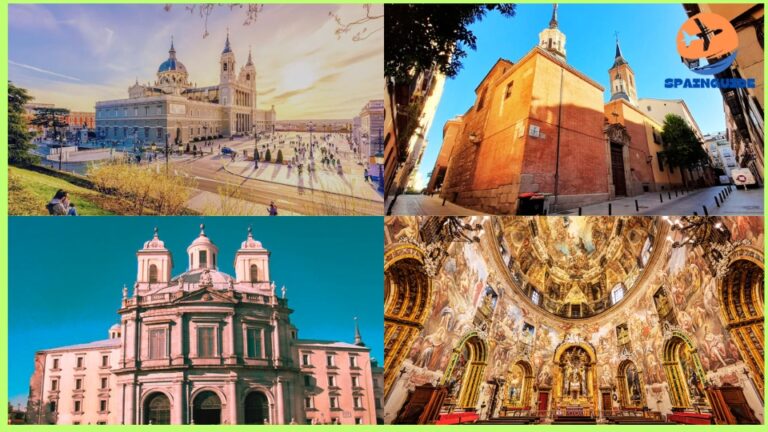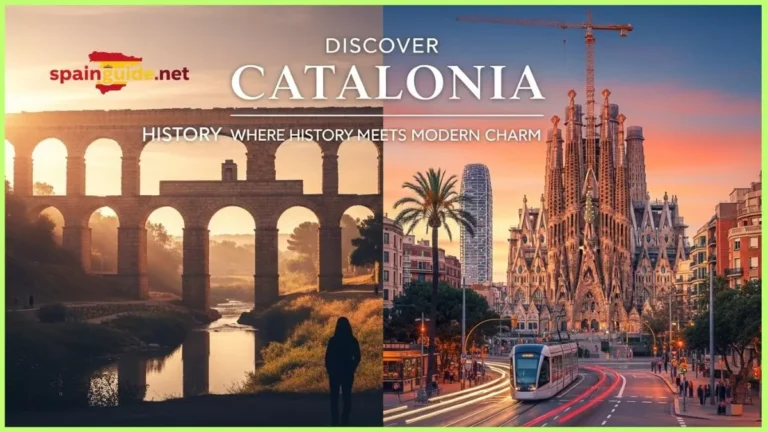Spain’s Tourism Industry: A Comprehensive Overview
Spain’s tourism industry is a powerhouse, attracting millions of visitors each year. With its diverse culture, stunning landscapes, and world-renowned cuisine, Spain offers something for every traveler. In this comprehensive guide, we’ll delve into the heart of Spain’s tourism industry, exploring its key attractions, travel tips, and much more.
Historical Overview of Tourism in Spain
Tourism has long been an integral part of Spain’s economy and culture. The country’s favorable climate, beautiful beaches, and rich cultural heritage have attracted visitors from all over the world for centuries. During the 20th century, Spain experienced a significant tourism boom, especially in coastal areas like the Costa del Sol and the Balearic Islands, leading to the development of infrastructure to accommodate the growing number of tourists.
Popular Tourist Destinations in Spain
Spain boasts a wide array of popular tourist destinations, each offering its unique charm and attractions. Cities like Barcelona, known for its stunning architecture and vibrant nightlife, and Madrid, the country’s capital with its world-class museums and historic landmarks, are perennial favorites among tourists. Other notable destinations include Seville, famous for its Moorish architecture and flamenco dancing, Valencia, home to futuristic buildings and the annual Las Fallas festival, and Granada, known for the majestic Alhambra palace.
Cultural Attractions in Spain
Spain is a treasure trove of cultural attractions, with a rich artistic and architectural heritage. The country is home to numerous museums housing priceless works of art, such as the Prado Museum in Madrid, which boasts an extensive collection of European art, including works by masters like Velázquez and Goya. Art galleries and architectural landmarks like Antoni Gaudí’s Sagrada Família in Barcelona and the Alcázar of Seville are also must-visit attractions for culture enthusiasts.
Natural Attractions in Spain
In addition to its cultural heritage, Spain is blessed with breathtaking natural landscapes that attract nature lovers and outdoor enthusiasts. The country’s coastline is dotted with beautiful beaches, from the sun-soaked shores of the Costa del Sol to the rugged cliffs of the Costa Brava. Inland, Spain’s diverse geography offers everything from lush green valleys and rolling hills to rugged mountains and pristine national parks like the Picos de Europa.
Gastronomy and Culinary Tourism in Spain
Spanish cuisine is renowned for its diversity and flavors, with each region offering its own specialties and traditional dishes. From paella in Valencia to tapas in Andalusia, food plays a central role in Spanish culture, and culinary tourism is a growing trend in the country. Visitors can embark on gastronomic tours to sample local delicacies, visit vineyards and wineries, and learn about the rich culinary traditions that have shaped Spanish cuisine.
Impact of Tourism on Spain’s Economy
Tourism is a key driver of Spain’s economy, contributing significantly to the country’s GDP and providing employment opportunities across various sectors. The industry has been vital in revitalizing local economies, especially in rural areas and smaller towns that rely heavily on tourism for income. However, the rapid growth of tourism has also raised concerns about sustainability and its impact on the environment and local communities.
Challenges and Future Trends in Spain’s Tourism Industry
Like many other countries, Spain’s tourism industry faces challenges such as over-tourism, environmental sustainability, and changing consumer preferences. However, the industry has shown resilience and adaptability, with efforts to promote responsible tourism and diversify offerings to attract different types of travelers. Future trends in Spain’s tourism industry are likely to focus on sustainable practices, digital innovation, and the development of niche tourism products to cater to evolving consumer demands.
Spain’s tourism industry offers a wealth of experiences for travelers, from its vibrant cities to its picturesque countryside. Whether you’re interested in history, and culture, or simply relaxing on the beach, Spain has something for everyone. By following these tips and recommendations, you can make the most of your visit to this beautiful country.
FAQs
What are some of the most popular tourist destinations in Spain?
Some of the most popular tourist destinations in Spain include Barcelona, Madrid, Seville, Valencia, and Granada, each offering its unique attractions and experiences.
What is the impact of tourism on Spain’s economy?
Tourism is a significant contributor to Spain’s economy, generating revenue, creating jobs, and supporting various sectors such as hospitality, transportation, and retail.
What are some of the challenges facing Spain’s tourism industry?
Spain’s tourism industry faces challenges such as over-tourism, environmental sustainability, and changing consumer preferences, which require strategic planning and management.
How is Spain’s tourism industry adapting to future trends?
Spain’s tourism industry is adapting to future trends by promoting sustainable practices, embracing digital innovation, and diversifying its offerings to cater to evolving consumer demands.
What makes Spain an attractive destination for tourists?
Spain’s rich cultural heritage, diverse landscapes, culinary delights, and warm climate make it an attractive destination for tourists seeking a mix of history, culture, and natural beauty.







